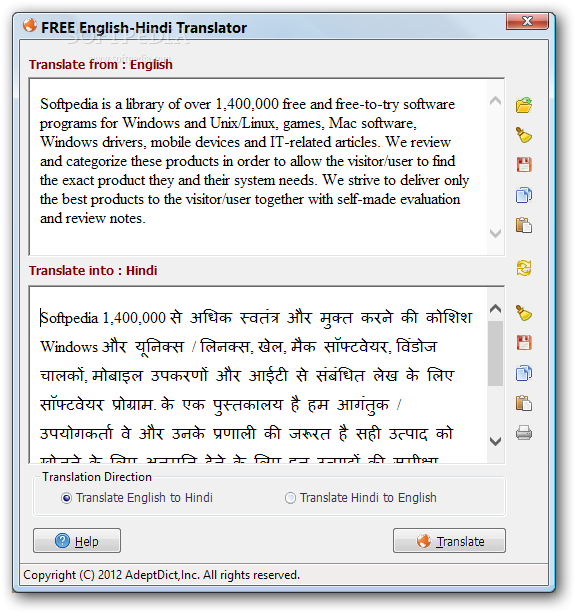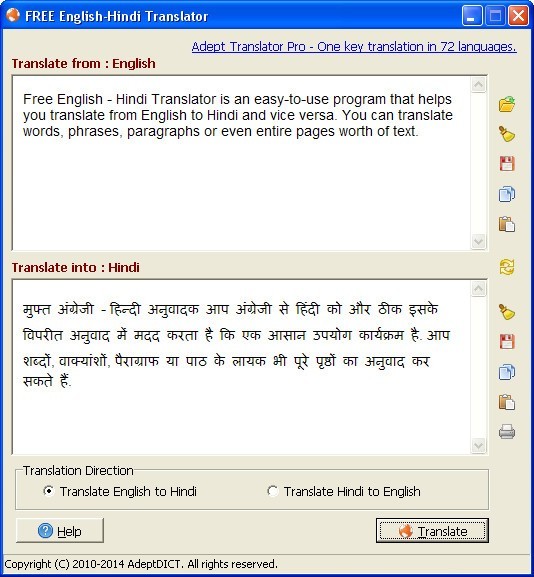What is Translation Software?
When we talk about translation software we usually mean CAT (computer-aided translation) tools, which should not be confused with machine translation. CAT tools help translators streamline their translation processes, but do not do any of the actual translating for them, unlike machine translation tools.
CAT tools enable users to store and edit translations, translate texts section by section (while preserving the formatting), and add an extra layer of quality control (consistency, spelling, equivalence, etc.).
There are different types of software out there to suit different circumstances and needs:
Downloadable desktop programs you install on your computer,
Cloud-based solutions you work on online.
Some providers even go the extra mile and offer a marketplace of freelancers and translation businesses alongside their CAT tool so you can easily find and collaborate with other professionals.
Let’s dig into each type and review some of the best translation software tools in 2023
Best Translation Software Tools in 2023
Cloud-based Translation Tools
Cloud-based (or web-based) translation tools are programs that you access and use online via a web browser. These platforms are becoming increasingly common in all industries and most translation technology providers are following suit.
Smartcat
Smartcat’s translation platform is designed to ensure a quick and smooth translation process for teams and projects of any size. It features everything you need to translate just about anything, whether it’s a basic document, a whole website, or an app. On the flip side, since it comes with such a comprehensive set of functionalities, it can be a little daunting at first.
MateCat
MateCat is a free open source translation tool for freelance translators and businesses. As with Smartcat, there’s no limit on the number of users or projects.
As for the downsides, MateCat, has limited functionality, and your translation memories are stored for public use by default. This means that if you’re working with confidential documents you need to make sure you make your translation memories private before starting your translation.
WordfastAnywhere

This is the online version of the offline CAT tools Wordfast Classic and Pro. It is completely free and allows for collaboration with other users. However, the tool’s main weakness is that getting to grips with all the tooltips and the interface can take a while.
Memsource
Memsource is a simple and intuitive translator and editor. However, some translators find it lacks terminology management functionalities and is slow when working on large projects.
Wordbee
Wordbee is a translation management platform with a basic CAT tool. It focuses on collaboration and works well at the project management level but lacks some of the more advanced functionalities, with speed reportedly an issue.
XTM Cloud
XTM Cloud is a powerful web-based translation tool with all the necessary functions and a solid support team. As for the downside, the tool doesn’t support mobile web browsers.
Desktop Translation Tools
Desktop translation software tools are traditional software programs you have to download and install on your computer. Many have been around for quite a while so much of their customer base are translators, LSPs, and agencies that may be reluctant to explore web-based alternatives.
However, most of these desktop translation tools are interfaces that let users work offline but have to connect to the cloud at the end of the day.
OmegaT
OmegaT is a free, open-source translation tool that you can use on Mac, Linux, and Windows. The layout of the source and target segments is slightly different from other tools, but users quickly adapt to it.
A drawback, as is common with open-source software, is that it only provides community support, so using it for enterprise-scale implementations can be risky.
CafeTranExpresso
CafeTran Espresso is particularly attractive to Mac and Linux users as, along with OmegaT, is one of the few free translation CAT tools compatible with these operating systems. On the flip side, the program is only free to use with translation memories or glossaries up to a certain size.
SDL Trados Studio
Trados is the most widely-used desktop translation tool, especially among companies, LSPs, and translation agencies. It’s comprehensive, feature-rich, and, most notably, everywhere — so whether you’re a customer or a vendor, you can be reasonably confident that the other party will support it one way or another.
The biggest downside to Trados is that many users find it far too complex for what most translators need, which means there’s a steep learning curve when you first start using it. Besides, it only runs on Windows, is costly, and does not support native collaborative work. The best you can get is a client-and-server solution, which leads to the usual “seat-counting” problems.
MemoQ
MemoQ is probably Trados’ biggest competitor as it is similar in functionality and performance. The main issue, again, is the steep learning curve before reaping the benefits.
Deja Vu
A complete and reliable translation tool, Déjà Vu is especially strong as a terminology management solution. The downside is that the licence is a bit pricey for its functionality.
Across
Across is a comprehensive, reasonably priced desktop CAT tool with basic features and an online marketplace. The pitfall is that installation and sometimes speed can be an issue.
What’s the Right Type of Translation Software Tool for You?

Cloud or desktop? What type of translation tool you go for will ultimately depend on your preferences and, perhaps, your freedom to choose. Let’s take a closer look at their strengths and weaknesses.
Pros and cons of cloud-based translation tools
Pros:
No need to free up any space or install any software on your computer.
You can work from any operating system, whether it’s Windows, MacOS, or even a variation of Linux.
Translations are saved in real time so you won’t lose any data. You may lose a sentence at worse, whereas everything can disappear on a desktop tool.
You can access it on any device with an Internet connection.
It’s easier to collaborate with others online.
Updates and bug fixes are frequent and immediate.
Cons:
Data may be hacked online. However, there is no consensus in IT circles as to whether the risk is higher on web-based platforms than on desktop programs, where data can be erased, stolen, or lost.
Highly reliant on an Internet connection. To remedy this, some software tools allow you to continue using most features if you go offline.
Pros and cons of desktop translation tools
Pros:
You can work without an Internet connection.
No server issues like crashing or slowing down. As long as your computer works you can work.
Cons:
You need to install software and use up space on your computer.
You can only use it on a designated computer, unless you have multiple licenses and install it on other devices.
Most only work on Windows PCs.
How safe your translation projects are depends on how safe your computer is. You can lose everything if your computer is stolen, damaged, or breaks down.
Fewer updates: it takes longer to release and implement bug fixes and updates than with online software.
Your ultimate choice should be based on your resources and how you need to work. Ideally, try out several tools until you find one that works for you.

